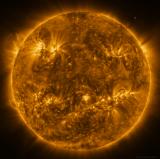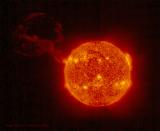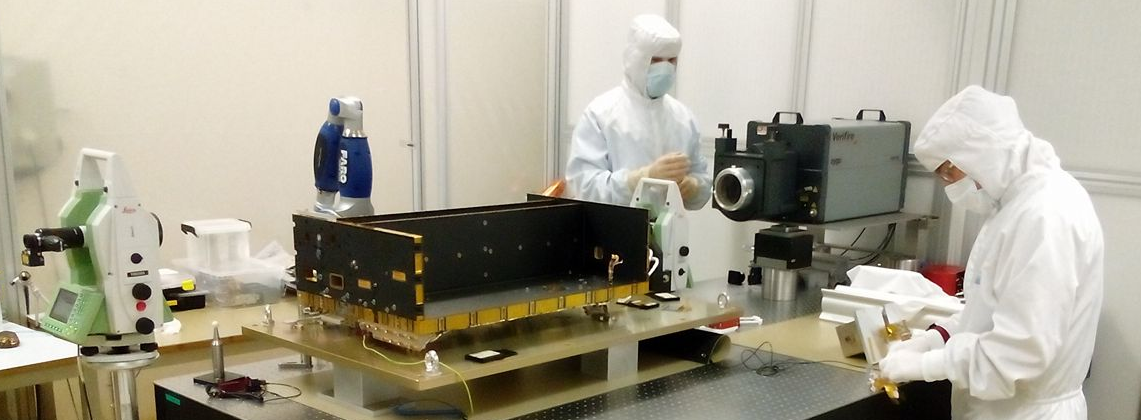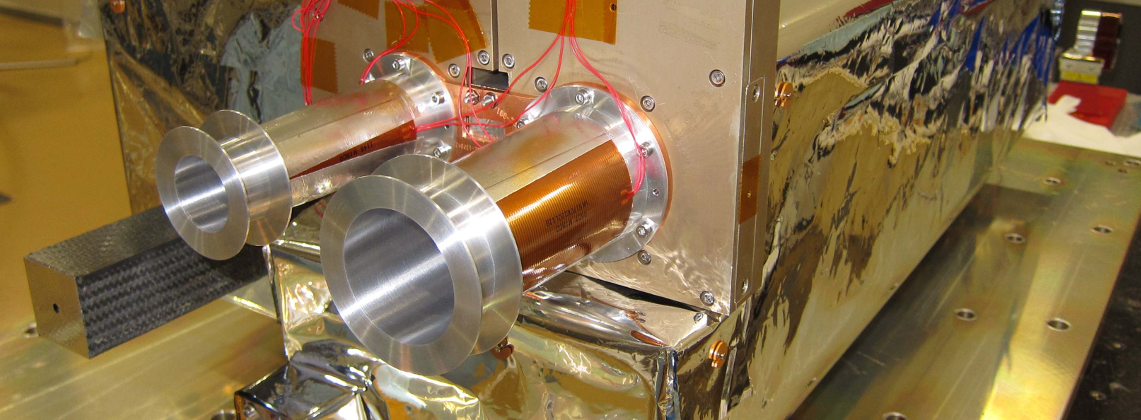Partial Solar Eclipse of March 20th 2015
The partial solar eclipse on March 20th 2015 has been observed in Humain by the 6-m dish radio telescope connected to a e-Callisto receiver. The instrument has recorded the solar flux as the Moon passes in front of the Sun.
In the mean time, another instrument, measuring the sky luminosity in visible light, has also detected a drop of a few percent during that event. This instrument is used by astronomers from ROB to assess the opportunity to observe on certain days, at night.
X9.3 flare of September 6 2017
NOAA region 2673 produced a X9.3 flare on September 6 2017, peaking at 12:02 UT. It was accompanied by an intense and complex radio event displaying a low frequency type II burst, and a type IV burst spanning the entire frequency range covered by the ARCAS and HSRS spectrometers in Humain.
X1.0 flare of October 28 2021
NOAA AR region 2887 produced a X1.0 flare on October 28 2021, peaking at 15:35 UT. It was associated with a large coronal wave, a halo CME and a proton event. More information can be found in this STCE news item.
This eruptive event was observed at the very end of the normal observing window, when the 6-m radio telescope stops tracking the Sun and waits for about 30 min before going back to a "parking" position, at the local south.
Solar Orbiter returns to Earth for a last goodbye
New extended hemispheric sunspot numbers
On July 19, 2021, we added a new time series to our data products: extended hemispheric sunspot numbers starting in 1874. Those reconstructed numbers are based on the sunspot areas listed in the Greenwich photographic catalogue, and are calibrated on the SILSO reference hemispheric series, which starts only in 1992. This newly published series results from a collaboration between SILSO, the University of Graz (Austria) and the Skolkovo Institute of Science and Technology (Moscow, Russia).
dfghjop
ertyuil






